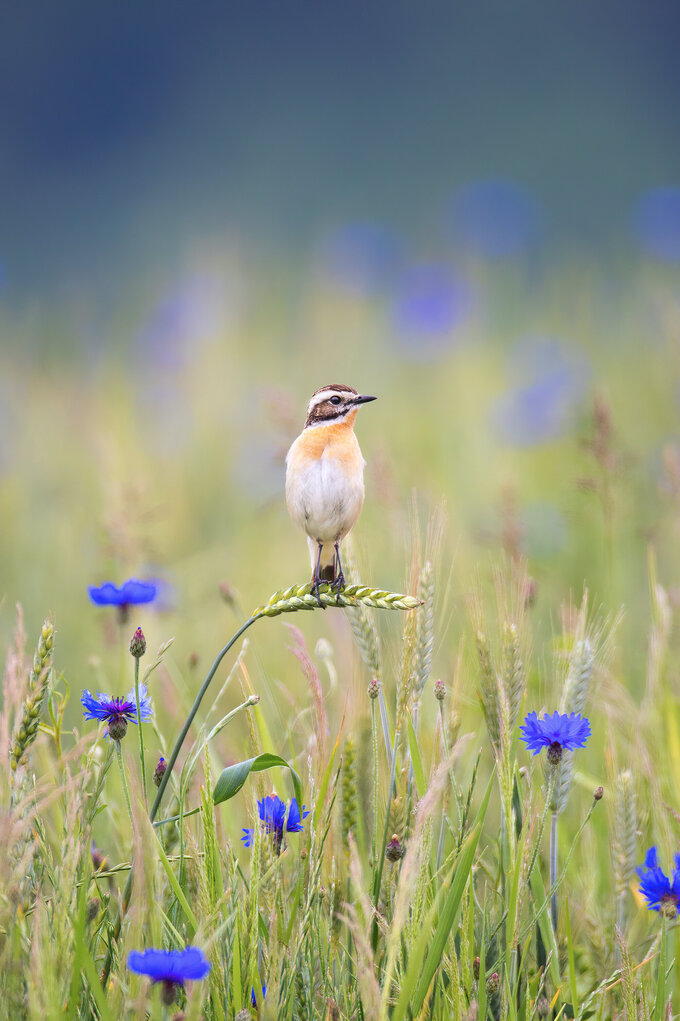Bird of the year 2022: The hoopoe
An exotic species in Germany. The hoopoe is a rare and extraordinary bird, and not only in appearance.
(Almost) a bird of paradise

With its orange plumage and large, patterned crest, it makes a striking picture: the hoopoe (Upupa epops). Voted Bird of the Year 2022, it is not only a particularly beautiful representative, it is also quite a rare and shy bird. Have you ever seen one in the wild? If so, you are part of a small minority in Germany. If you want to see this bird, your best chance would be to look for it in warmer areas (such as in the Kaiserstuhl hills) or mining reclamation areas and decommissioned military training areas, especially in East Germany.
The population in Germany is estimated at around 800-950 breeding pairs (as of 2020, Federal Agency for Nature Conservation). This number is on the increase again after the hoopoe was noted as already extinct on the Red List for Germany in 2005. This is mainly due to the loss of suitable habitat. But thanks to measures such as bird sanctuaries and species protection projects, the population is slowly increasing again. However, it is still considered an endangered species.
Off to the south


As a bird that prefers warmth, the hoopoe is a migratory bird that spends the winter in Africa. Its preferred food includes bigger insects such as beetles, crickets and grasshoppers, and larvae. Sometimes spiders, earthworms, smaller frogs or lizards are also on the menu. The hoopoe hunts its prey from the ground. The hoopoe hunts its prey from the ground.
It owes its scientific name Upupa epos to its distinctive courtship call: the three-syllable ‘hoop-hoop-hoop”. This dull, unmistakable call is easily recognised.
A very special scent
The hoopoe can live up to 10 years. However, it is often eaten before this by birds of prey or maggots. To survive, he has developed a special strategy. If he cannot flee to a hiding place quickly enough, the hoopoe lies flat on the ground with spread wings. Its plumage, which is otherwise so conspicuous, blends the contours with the surroundings and the birds are cleverly camouflaged. When they are seen in this position, it is often believed that they are enjoying the sun, but it is actually a sign that the hoopoe is feeling very threatened.
The hoopoe can also secrete a strong-smelling secretion from its preen gland as a form of defence. During the breeding season, the preen gland (uropygial gland) is particularly developed in the female. The breeding ground is therefore usually surrounded by a strong odour. The assumption that the birds are very unclean during the breeding season is not correct. The female and the nestlings secrete the secretion regularly to keep predators away.
2 x 1st place
The hoopoe has been voted Bird of the Year for the second time. It was chosen for the first time in 1971, and the second time it was nominated to this title through a public election. Over 140,000 people voted. The hoopoe received 31.0% votes to beat its competitors the house martin, linnet, tree sparrow and wheatear. The bird of the year is determined by NABU (the German Nature and Biodiversity Conservation Union) and its Bavarian partner LBV (the Bavarian Regional Association for the Protection of Birds). This was the second election conducted by public vote. Bird of the Year has been voted on since 1971.


